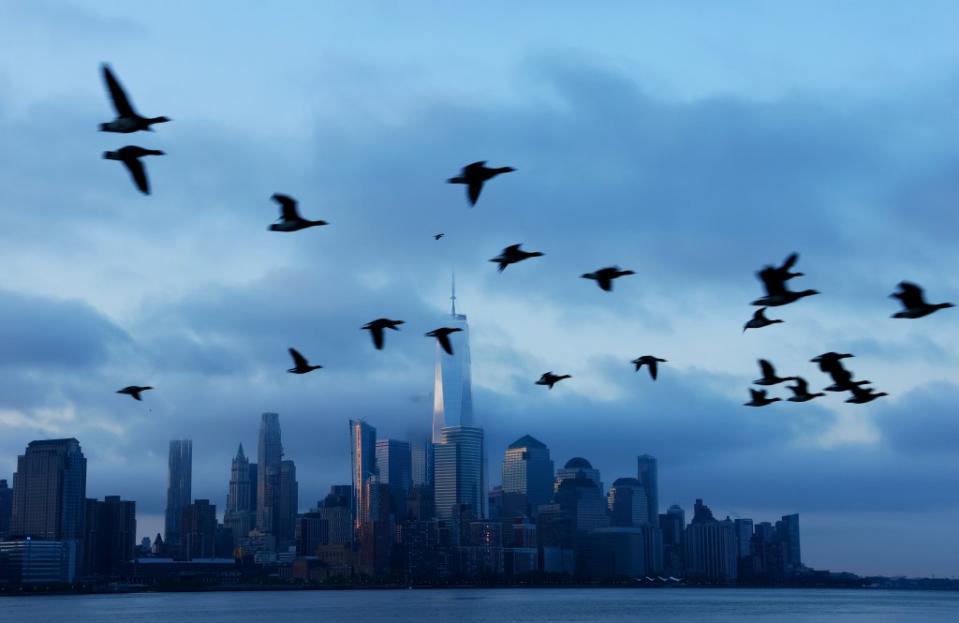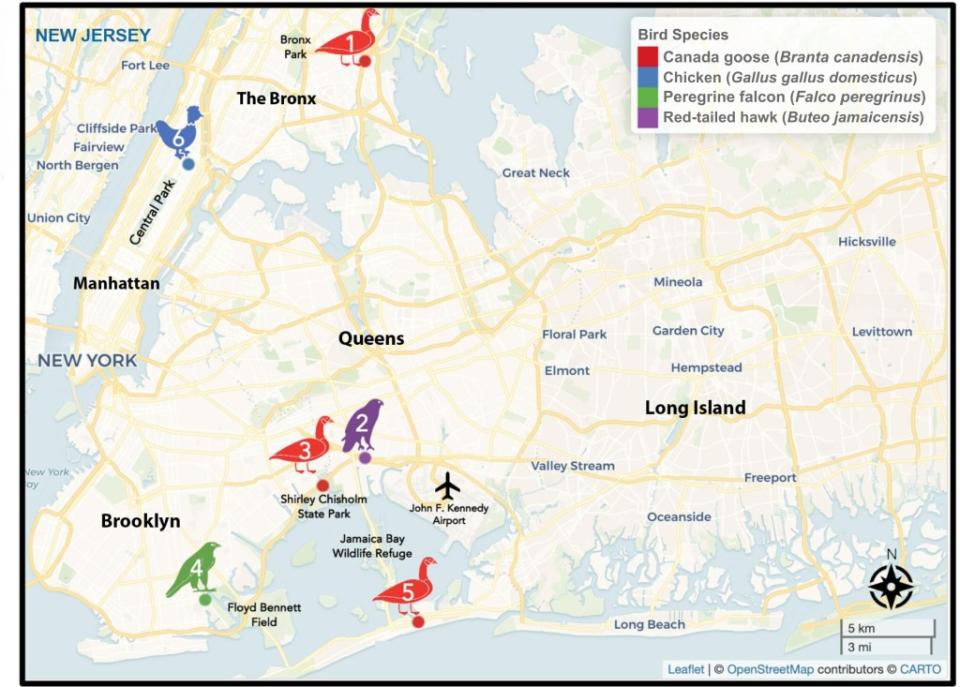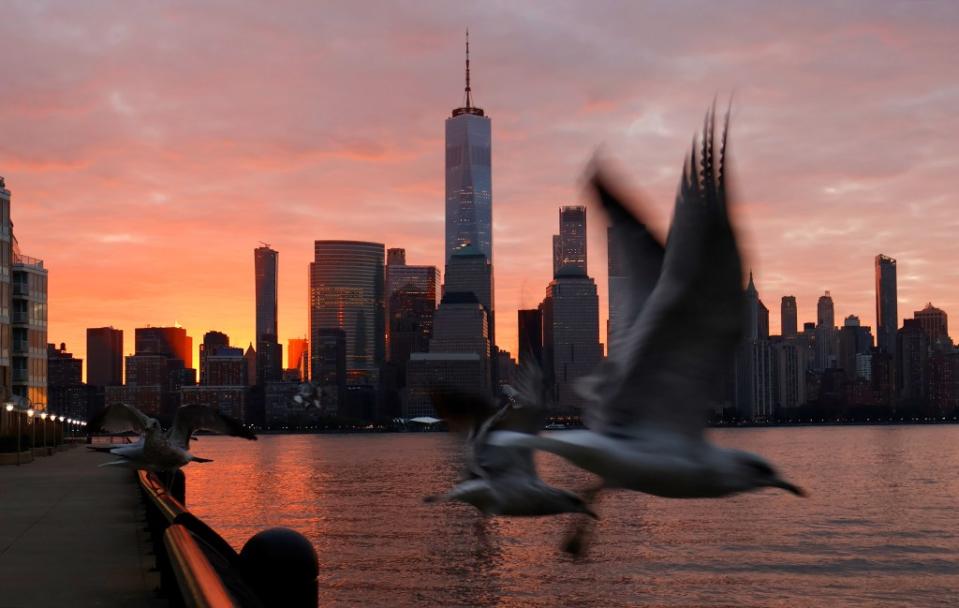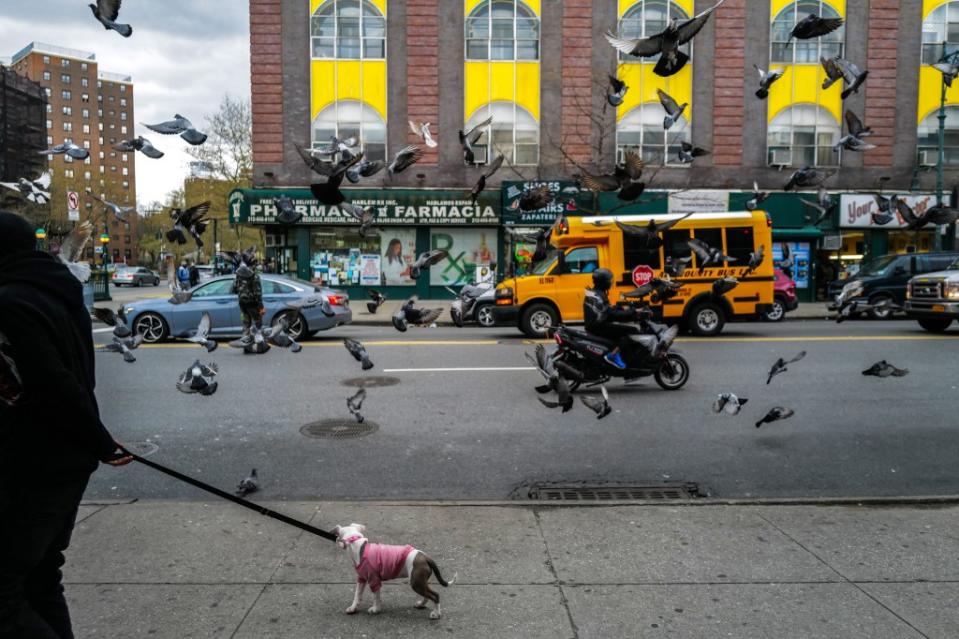Highly pathogenic avian flu found in NYC birds: study

Bird flu has come to roost in the concrete jungle.
A highly pathogenic strain of avian flu has been circulating among New York City’s feathered friends for years, a group of scientists say. And it means that pet owners should be on alert.
The New York City Virus Hunters have found the avian flu in samples of bird poop that were collected between 2022 and 2023. The group published their findings in the Journal of Virology on Wednesday.

Volunteers collected 1,927 samples of bird droppings scattered across green spaces throughout the city as well as some from animal rehabilitation centers. In total, the group identified six birds that contained the highly pathogenic avian flu (H5N1), including three Canadian geese, a red-tailed hawk, a peregrine falcon and a chicken.
Although the number may seem small, bird flu can easily spread among animals. The virus has jumped to several dairy cattle herds, as well as other animals in the US, including foxes, racoons, possums, bears and bobcats.
And that means the dogs many New Yorkers take for walks on the street daily could also be at risk.
“It’s smart to stay alert and stay away from wildlife,” Christine Marizzi, a microbiologist at the Icahn School of Medicine at Mount Sinai, told ScienceAlert. “This also includes preventing your pets from getting in close contact with wildlife.”

The virus hunters are part of a community-based program that engages high school students in the first-ever citizen effort to map and track avian flu and avian paramyxoviruses that are circulating throughout New York City. (Paramyxoviruses include viruses like the measles, mumps and RSV.) The group received a $1.3 million grant from the National Institutes of Health late last year to expand their tracking efforts.
Although transmission from bird to human is extremely low, scientists are concerned that in extremely populated areas, like New York City, the risk could be somewhat higher. To date, only two cases of highly pathogenic bird flu (H5N1) in humans have been detected, one in 2022 and one in April, according to the Centers for Disease Control and Prevention. Both of these cases have been in individuals who came into close contact with infected livestock. No known cases of human-to-human transmission have occurred.

Although the cause for alarm remains low, experts say that NYC poses a unique risk: It’s a densely populated area and it’s right in the flight path of many migratory birds.
“This brings them into contact with a highly dense population of humans and pets, providing an extensive urban animal–human interface in which the general public may have little awareness of circulating infectious diseases,” Marizzi explained.
The findings suggest that avian flu has actually been present in NYC for a while, and no human cases have ever been confirmed.

Nevertheless, the World Health Organization has stated that the current strain of bird flu is of “great concern” and other experts have warned that we’re making all the same mistakes that were made in the early days of the COVID-19 pandemic. Remnants of the virus have been found in commercial milk, but because pasteurization kills the virus, this poses no risk to consumers, experts have said.
“Birds are key to finding out which influenza and other avian viruses are circulating in the New York City area, as well as important for understanding which ones can be dangerous to both other birds and humans,” Marizzi explained.

